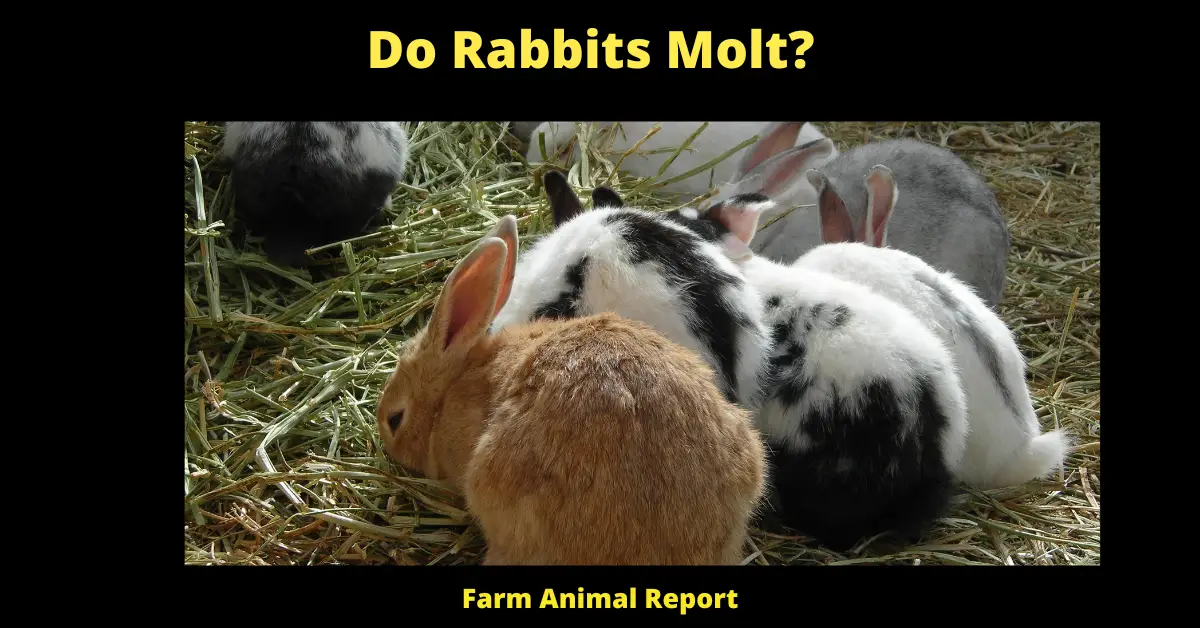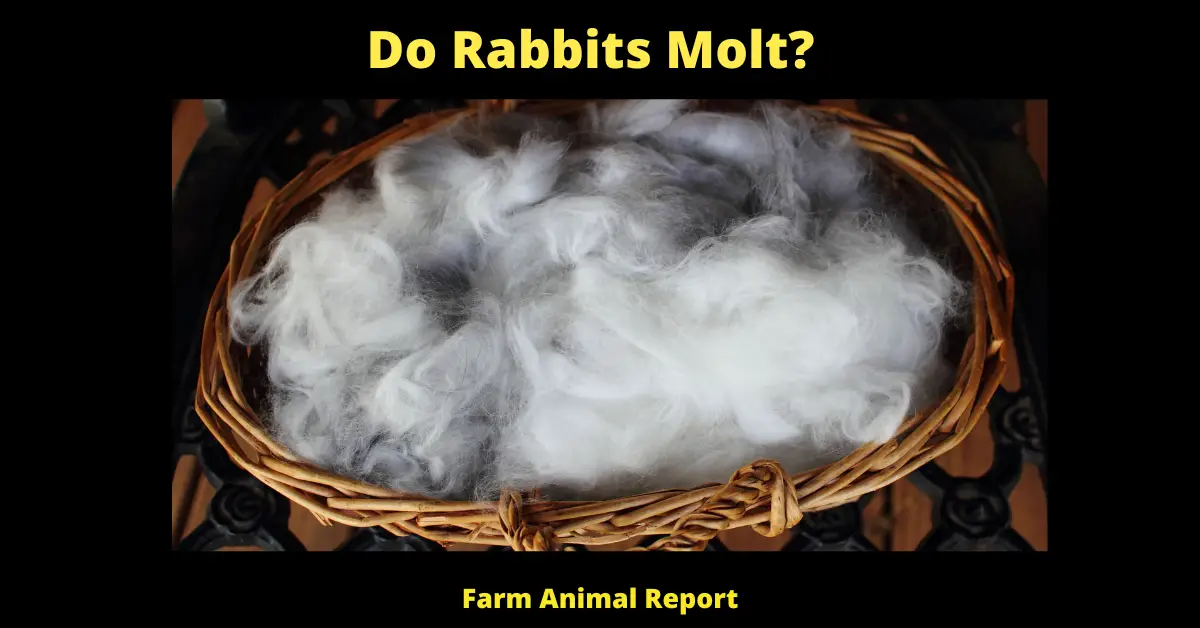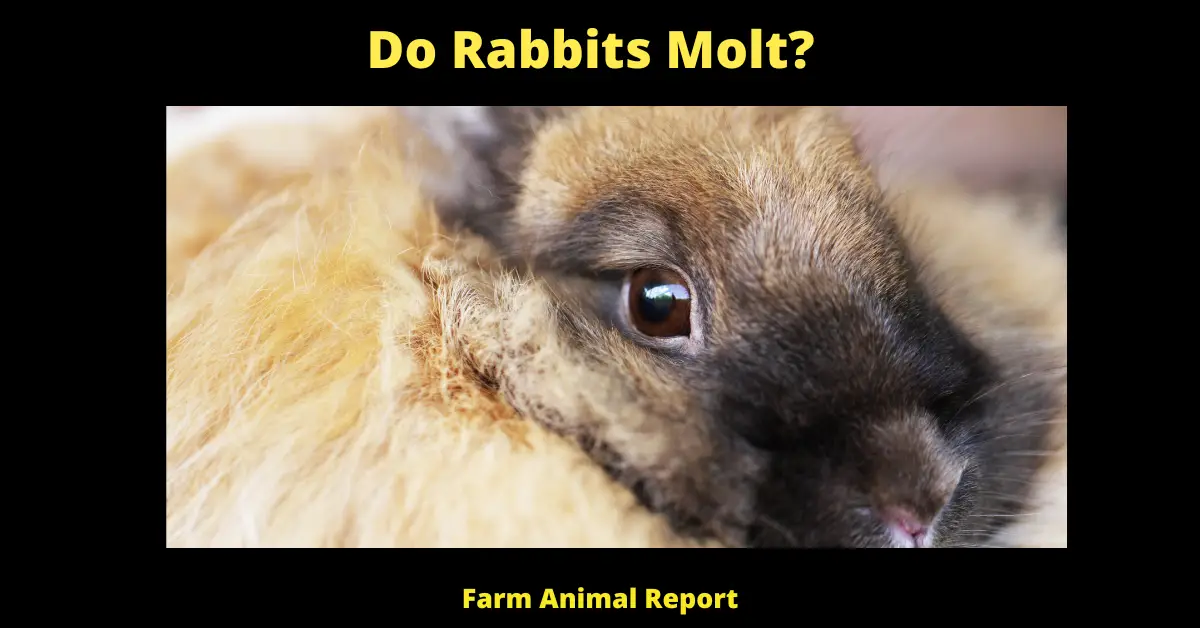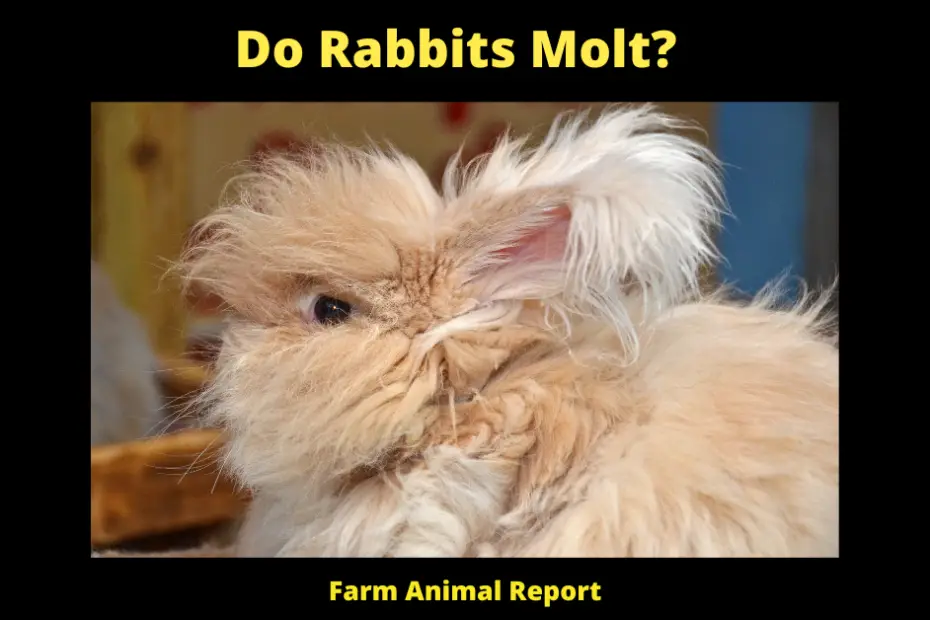Yes, Rabbits Molt – The average household rabbit molts once a year, but some may shed continuously or only in spring and summer. Wild rabbits often throw their coats (throws) during these times of the year; our domestic ones tend to live more sheltered lives so they can afford not to do this every single month as most other animals do!
Do Rabbits Molt?
One question that rabbit owners often have is whether or not their pet rabbits will molt. Molting is a natural process that all animals go through, and it can be a little confusing to see your furry friend shedding so much hair! In this blog post, we will discuss the molting process in detail and answer some of the most common questions about it. We will also provide tips on how to help your rabbit through the molting process. Do Rabbits Molt
What is Molting?
Molting is the process by which reptiles, birds, and mammals shed their old skin or feathers. In most cases, molting occurs in response to seasonal changes or as an animal grows. For example, many snakes will molt in the springtime, coinciding with their period of rapid growth.
Other animals, such as rabbits and deer, will molt in the fall as they prepare for the colder months ahead. The molting process usually takes place over a period of several weeks and can be quite stressful for the animal.

During this time, the animal’s metabolism slows down and it may stop eating altogether. In some cases, an animal will also lose its coloration during molting. However, once the process is complete, the animal will emerge with a new coat of fur or feathers that are better suited to its environment.
Why Do Rabbits Molt?
Rabbits are known for their soft fur, which provides insulation and helps to keep the rabbit’s body temperature regulated. However, rabbits also molt, or shed their fur, typically once or twice a year. This process helps the rabbit to get rid of any old, damaged, or excess fur.
In addition, molting allows the rabbit to regulate its body temperature more effectively. The amount of fur that a rabbit sheds during molting can vary depending on the season and the rabbit’s health. For example, rabbits typically shed more fur in the spring and summer months when the weather is warmer.
Rabbit molting is a natural process that occurs as the season’s change and the temperature gets colder. The old fur falls out and new fur grows in to keep the rabbit warm. This process happens twice a year, in the spring and fall.
Rabbits will also molt if they are sick, stressed, or have a nutritional deficiency. Molting can last for several weeks, during which time the rabbit may be less active and have less of an appetite. If you notice your rabbit molting, make sure to provide plenty of hay, fresh vegetables, and water to help them through this process.
What are the Stages of the Rabbit Molting Process?
The stages of the rabbit molting process are:
- 1. The rabbit’s coat begins to look dull and dry.
- 2. patches of fur start to fall out.
- 3. The rabbit starts to scratch more frequently.
- 4. The new fur starts to grow in.
- 5. The molting process is complete and the rabbit’s coat is shiny and healthy again.
Rabbits typically molt once or twice a year, although some may molt more often. Molting helps the rabbit get rid of any old, damaged fur and grow in a new, healthy coat. Although it can be a bit uncomfortable for the rabbit, molting is a necessary part of maintaining good health.

Does My Rabbits Fur Change Color during Molting?
Many animals undergo a process called molting, where they shed their old fur or feathers and grow a new coat. This usually happens in the spring and fall, when the weather is changing and days are getting shorter.
For rabbits, molting can be a bit more complicated. In the wild, rabbits molt to help them blend in with their surroundings and avoid predators. As a result, their fur changes color depending on the season (e.g., white in winter, brown in summer).
Domestic rabbits, on the other hand, don’t have to worry about predators. As a result, their fur may not change color as dramatically during molting season. However, you may still notice some subtle changes in your rabbit’s fur, such as a lighter or darker shade of their usual color. If you’re concerned about your rabbit’s molting process, talk to your veterinarian for more information.
Do some Rabbit Breeds shed More than Other Breeds?
Yes, some rabbit breeds do indeed shed more than others. The amount of shedding depends on several factors, including the type of coat and how often the rabbit is groomed. For example, Rex rabbits have a short, dense coat that requires very little grooming.
As a result, they shed very little. On the other hand, Lionhead rabbits have a long, luxurious coat that must be brushed several times a week to prevent matting. Not surprisingly, they tend to shed quite a bit. Ultimately, it is important to choose a breed based on your lifestyle and preferences. If you are looking for a low-maintenance pet, then a Rex rabbit may be the best option. However, if you don’t mind spending a little extra time grooming your rabbit, then a Lionhead might be a better choice.
How does a Rabbit Groom Itself?
Rabbits are clean animals and spend a large part of their day grooming themselves. They use their front paws to comb their fur and their teeth to nibble at knots. In addition, they often lick their fur to keep it clean and smooth.
Thanks to this constant grooming, rabbits are able to maintain a healthy coat of fur that protects them from the elements. Additionally, rabbits sometimes groom each other as a way of bonding. This mutual grooming helps to strengthen the bond between two rabbits and makes them feel more comfortable around each other. So the next time you see a rabbit grooming itself, remember that it’s not just trying to stay clean – it’s also trying to build a strong relationship with its fellow bunnies.
Do You need to help Your Rabbit during the Molt?
As any pet owner knows, rabbits are relatively low-maintenance animals. They are clean, quiet, and generally easy to care for. However, every year rabbits go through a process known as molting, during which they shed their old fur and grow new fur.
Molting can be a stressful time for rabbits, and it is often necessary for owners to provide extra care and attention during this period. One way to help your rabbit during the molting process is to brush its fur regularly.

This helps to remove loose fur and prevent your rabbit from ingesting too much of its own fur, which can cause health problems. In addition, you should make sure that your rabbit has access to plenty of hay, as this will help to keep its digestive system healthy during the molting process. By taking these simple steps, you can help your rabbit stay healthy and comfortable during the molting season.
How does the Rabbit Digest its Fur?
When a rabbit grooms itself, it swallows a lot of its fur. This fur is then stored in the rabbit’s stomach in the form of a hairball. The rabbit’s stomach produces a special kind of mucus that helps to break down the fur and extract nutrients from it.
The hair is then passed out of the body in the rabbit’s droppings. Although rabbits groom themselves regularly, they can still end up with hairballs if they swallow too much fur. In severe cases, hairballs can block the rabbit’s digestive system and require medical intervention.
For this reason, it is important to provide your rabbit with plenty of hay to gnaw on. Chewing on hay helps to keep the rabbit’s teeth healthy and also provides them with a source of fiber that helps to prevent hairballs.
Can you see its fur in Rabbit Droppings?
Rabbit droppings are fairly easy to spot in the wild. They are small, round, and typically brown in color. However, it can be difficult to see the fur in rabbit droppings unless you are looking for it. The fur is usually mixed in with the other contents of the dropping, and it can be hard to distinguish from the rest of the material.
However, if you take a close look, you should be able to see tiny strands of fur mixed in with the other elements. So, while it takes a bit of effort, it is possible to see the fur in rabbit droppings if you know what you’re looking for.
Can Your Rabbit Eating its fur cause impaction?
Rabbits are well known for their taste for grass, but did you know that they also like to nibble on their own fur? While this behavior may seem harmless, it can actually lead to a potentially fatal condition known as gastrointestinal impaction.
When a rabbit ingests too much fur, the hair can form a blockage in the intestines, preventing food from passing through. This can lead to severe malnutrition and dehydration, and if left untreated, impaction can be fatal. Fortunately, there are steps that you can take to prevent your rabbit from eating its fur.
Providing plenty of hay and fresh vegetables will help to keep your rabbit’s digestive system healthy and reduce the risk of impaction. In addition, regular grooming will help to remove any loose hair before it has a chance to be eaten. By taking these precautions, you can help to keep your rabbit safe and healthy.
What is Intestinal Fur Block (Wool Block) in Rabbits?
Intestinal fur block (IFB) is a life-threatening condition that occurs when a rabbit ingests too much fur. The fur accumulates in the gastrointestinal tract and forms a blockage, preventing food and water from passing through.
If left untreated, IFB can lead to dehydration, starvation, and eventually death. Signs of IFB include lethargy, lack of appetite, weight loss, and diarrhea. Treatment typically involves giving the rabbit laxatives or performing surgery to remove the blockage.
In severe cases, intensive supportive care may be necessary. With prompt treatment, most rabbits recover from IFB without any lasting effects. However, if the condition is allowed to progress unchecked, it can be fatal. As such, it is important to be aware of the signs of IFB and to seek veterinary care if your rabbit appears to be affected.
Symptoms of Fur Block in Rabbits
- Anorexia – decreased food and water intake
- Dehydration
- Small Tiny fecal Pellets
- Rabid Weight Loss
- Lethargy
- Straining to defecate
- Refusal to Groom
Treatment for Rabbit Fur Block
- Mineral Oil – in Early Stages
- Enzyme Tablets
- Meat Tenderizer
- Encourage Fluid intake
- Give Fresh Greens
- Offer Hay
- Increase Rabbits Activity
Prevention of Fur Block in Rabbits
- Daily Exercise
- Daily Grass Hay
- In Angoras – 3-5 Enzyme Tablets once a week
Check with your Local Vet
What to Feed Your Rabbit during Molt?
Rabbits, like all animals, go through a process called molting. This is when they shed their old fur and grow new fur. Molting usually happens once or twice a year, and it can last for several weeks. During this time, rabbits will often stop eating as much as they normally do.
This is because their digestive system slows down during molting. As a result, rabbits can easily become malnourished if they don’t get the right kind of food. The best way to ensure that your rabbit stays healthy during molting is to feed them hay.
Hay is rich in the nutrients that rabbis need, and it will help to keep their digestive system moving. You should also offer your rabbit plenty of water to prevent dehydration. By following these simple steps, you can help your rabbit molt safely and without any problems
Final Thoughts – Do Rabbits Molt?
Rabbits Molt, Shed old hair and relace with new hair growth, usually once to twice a year. Weather does affect this process. In hotter climates, rabbits will shed more often. Providing hay during this time is essential as well as fresh water to prevent dehydration. A healthy diet and exercise routine will help your rabbit through the molting process.





